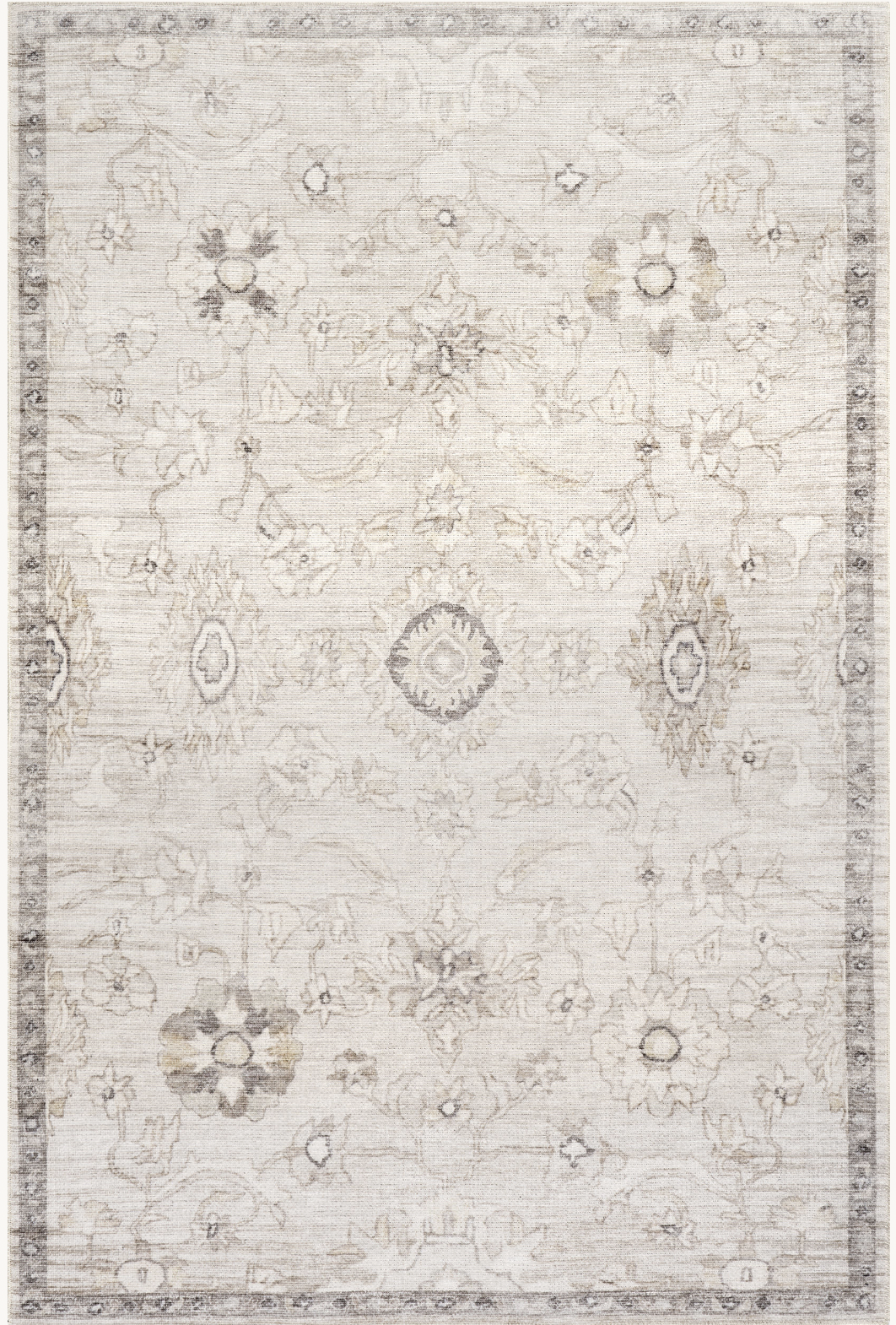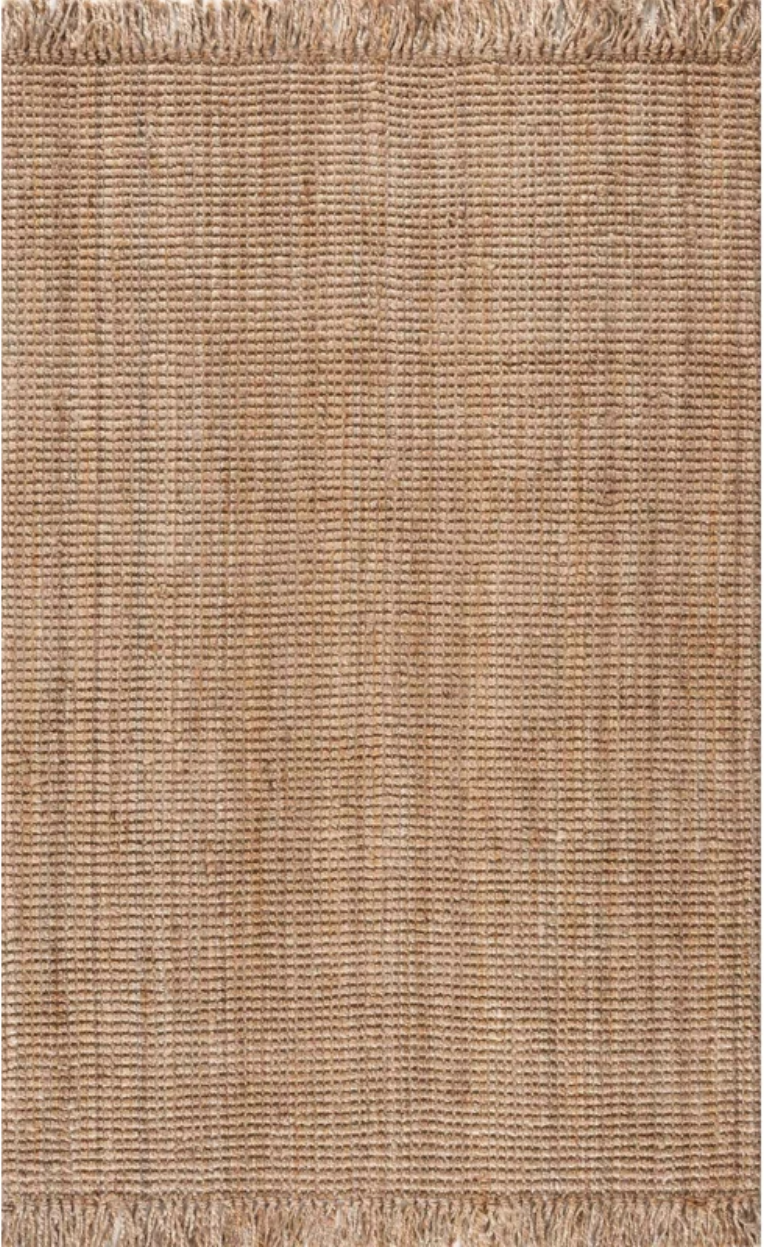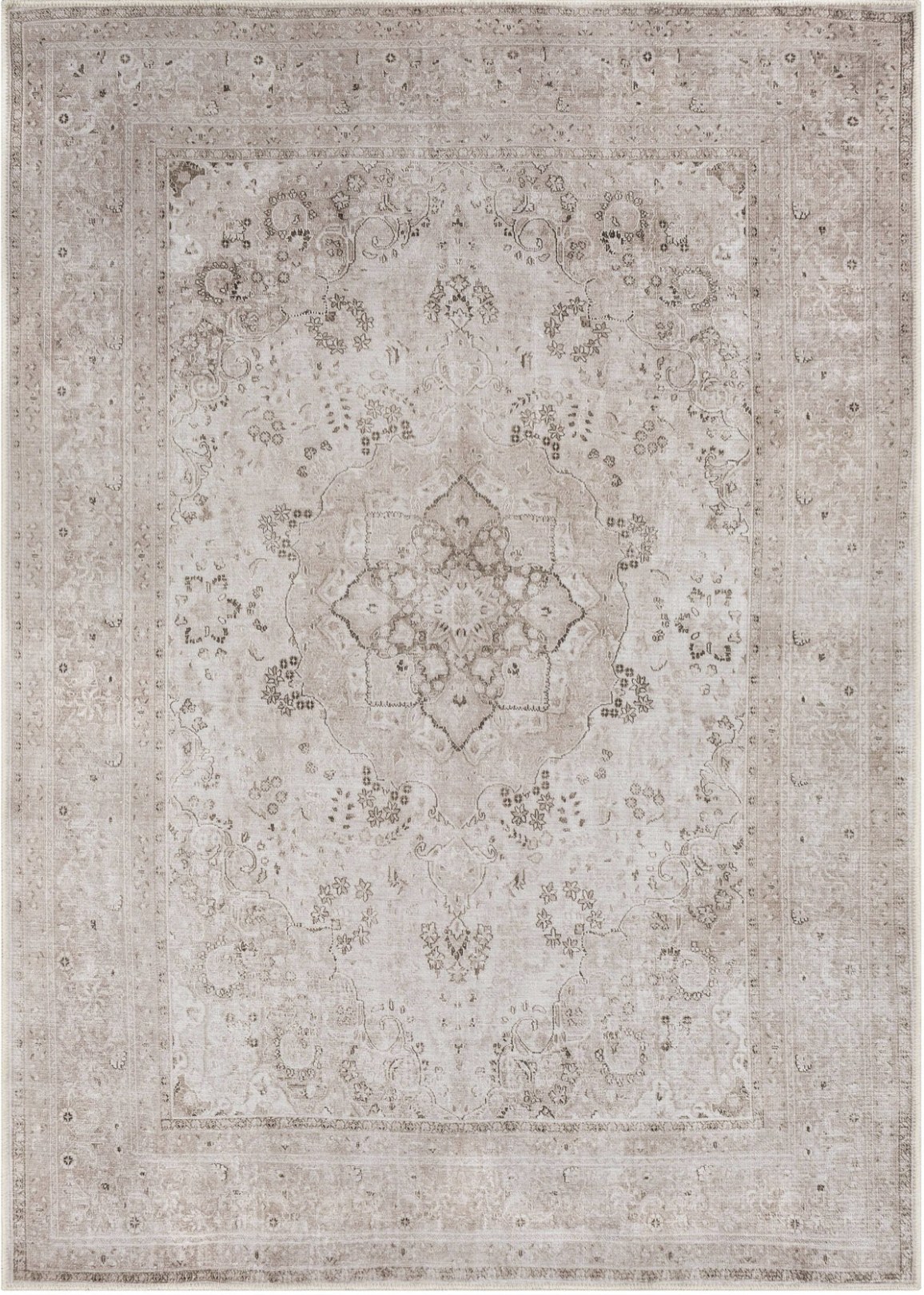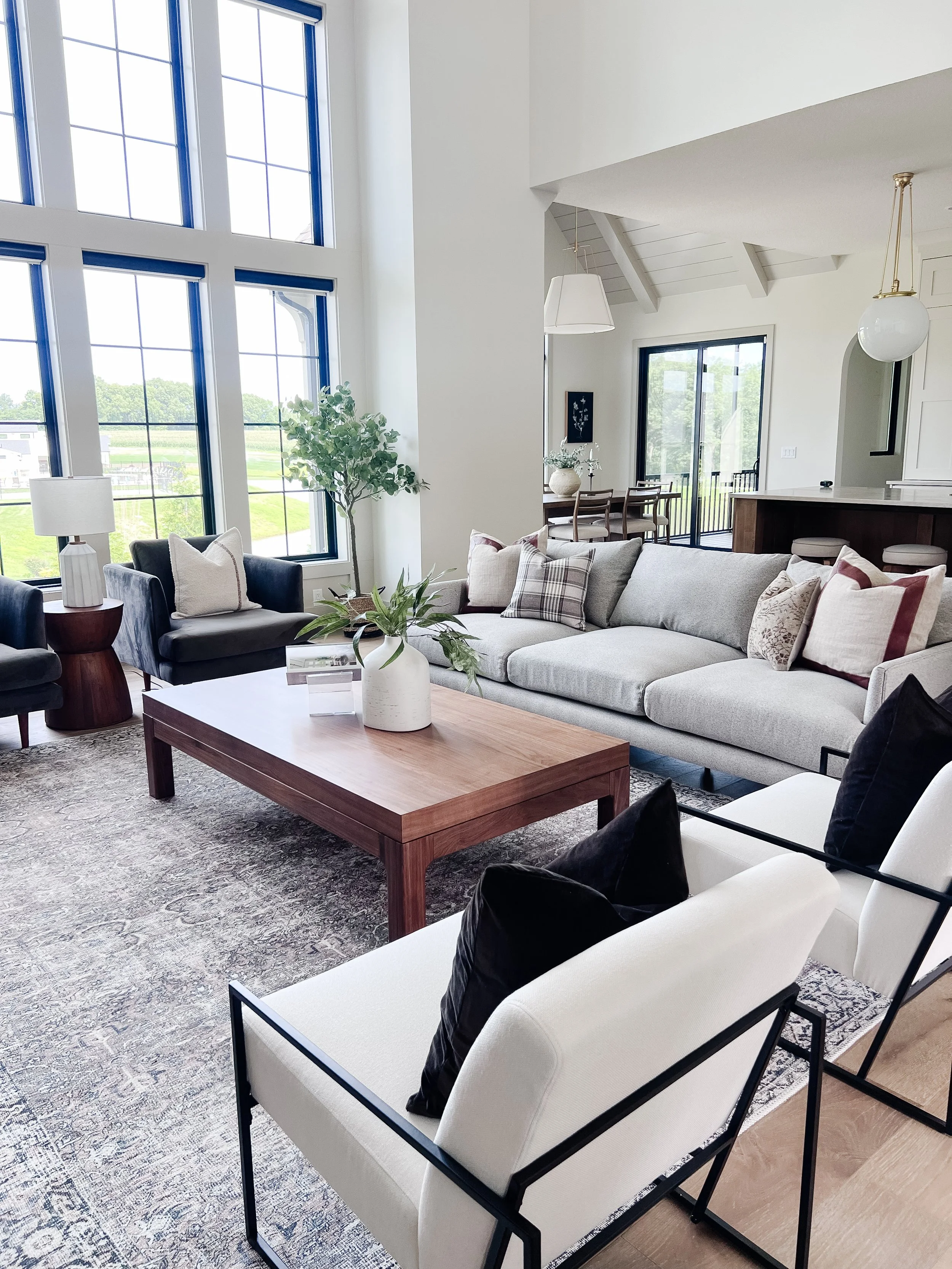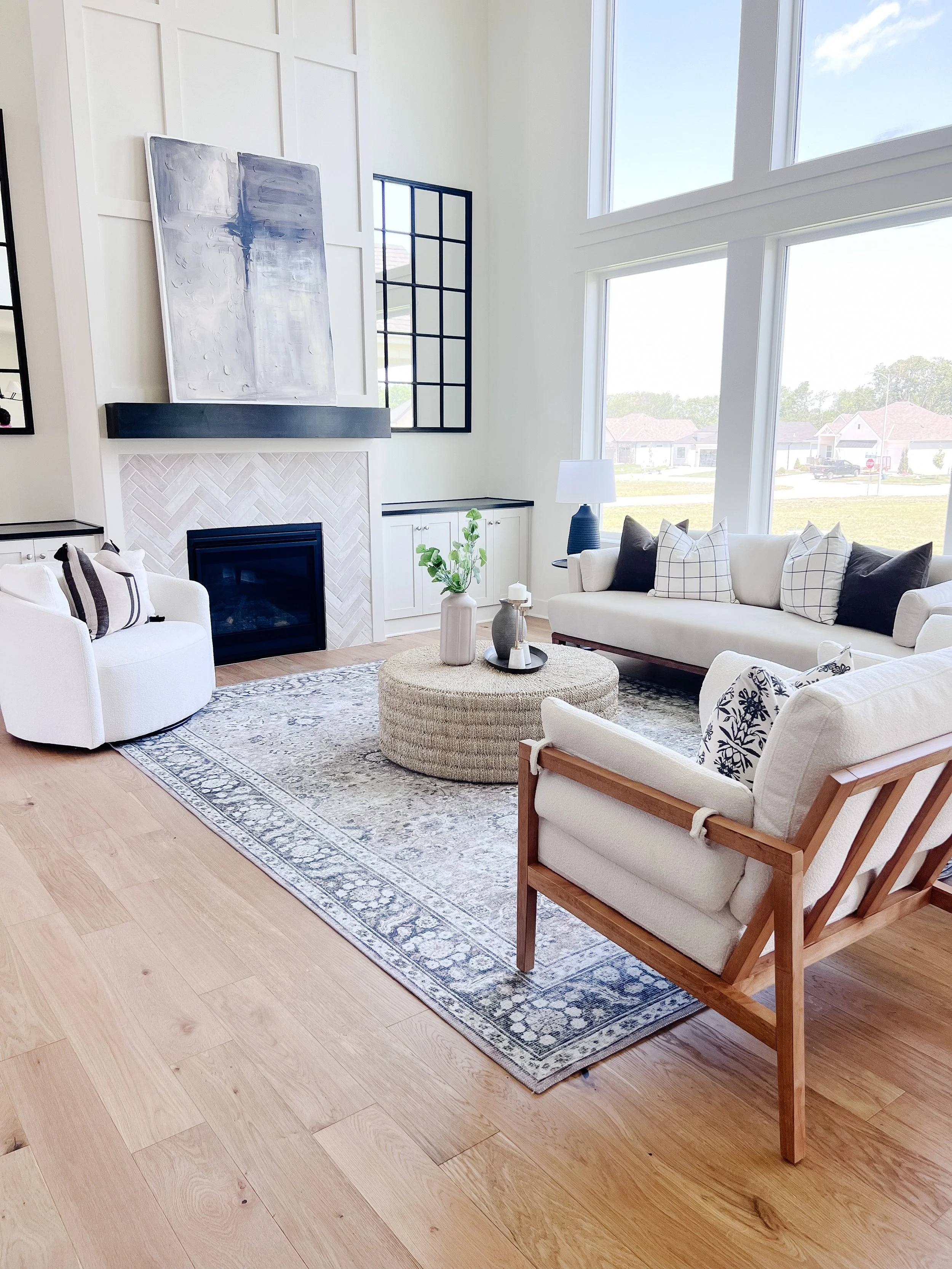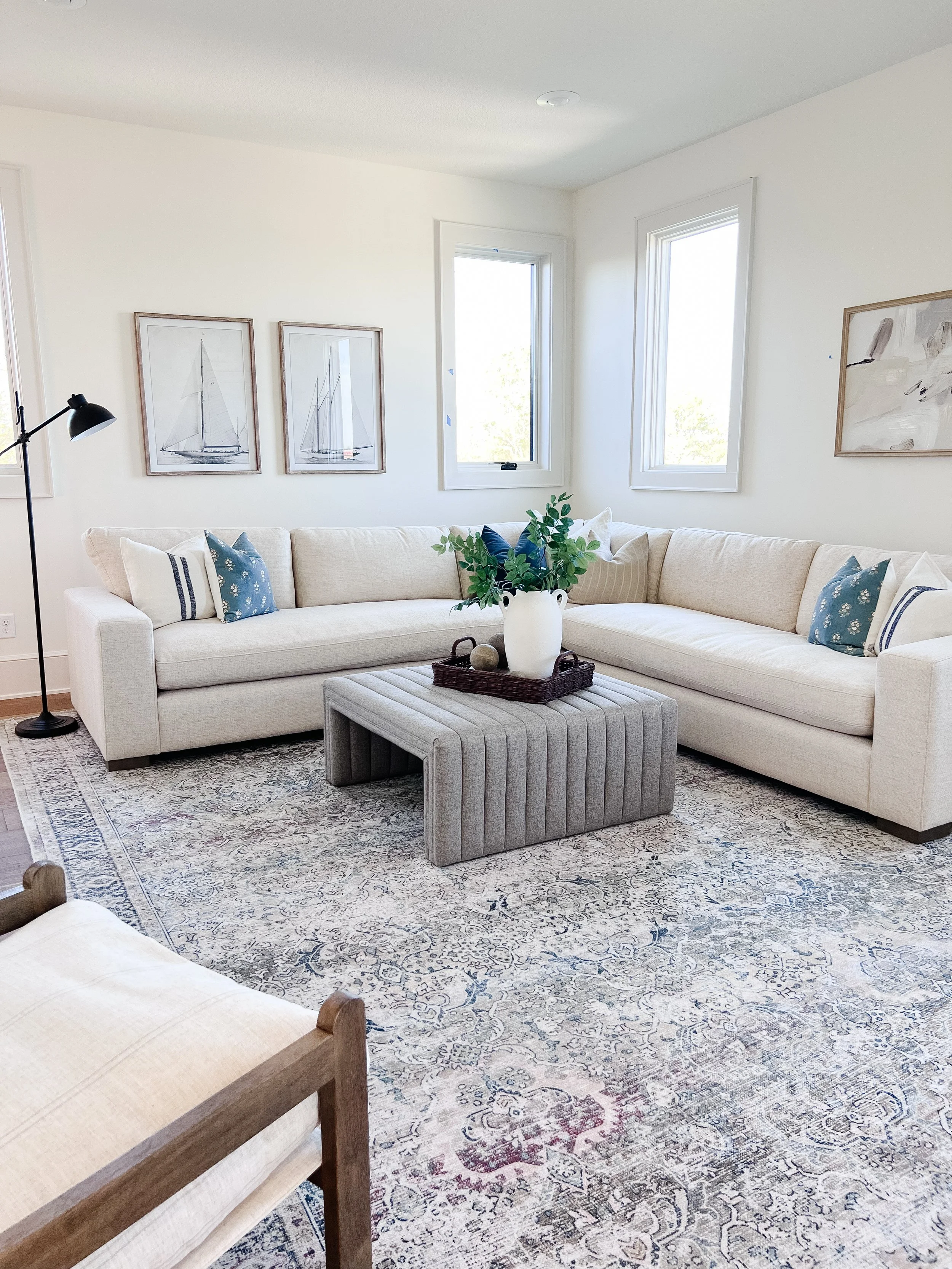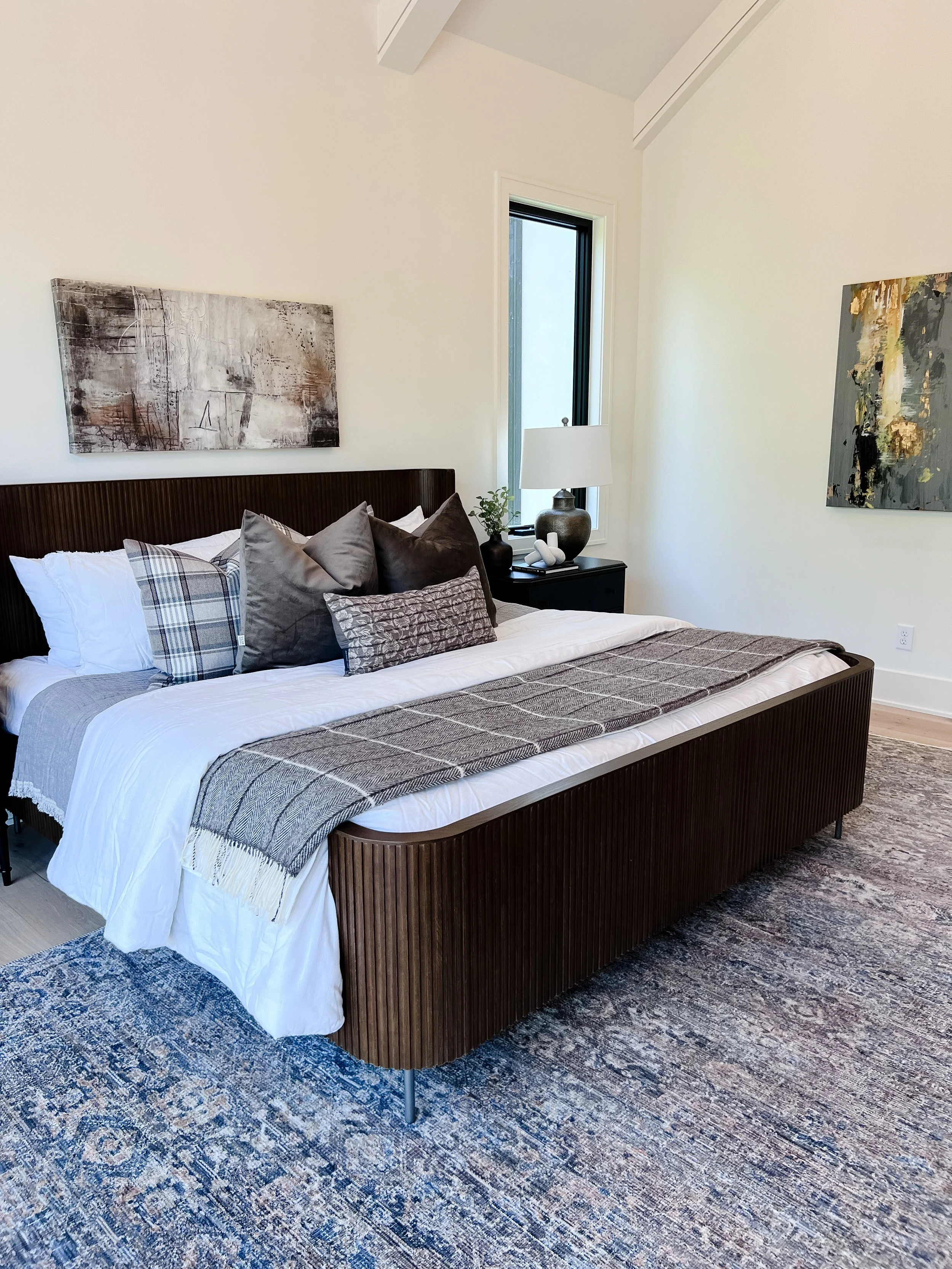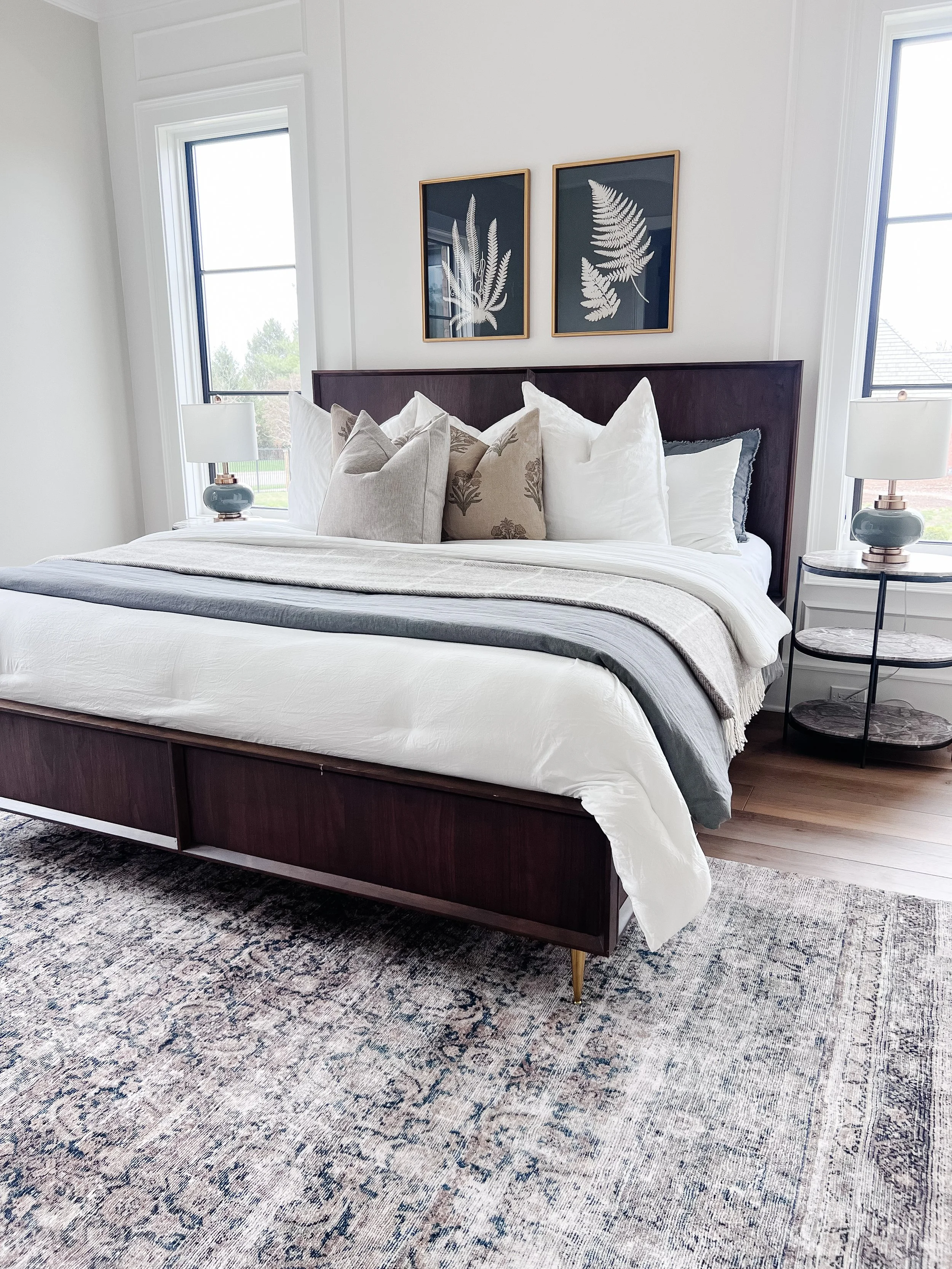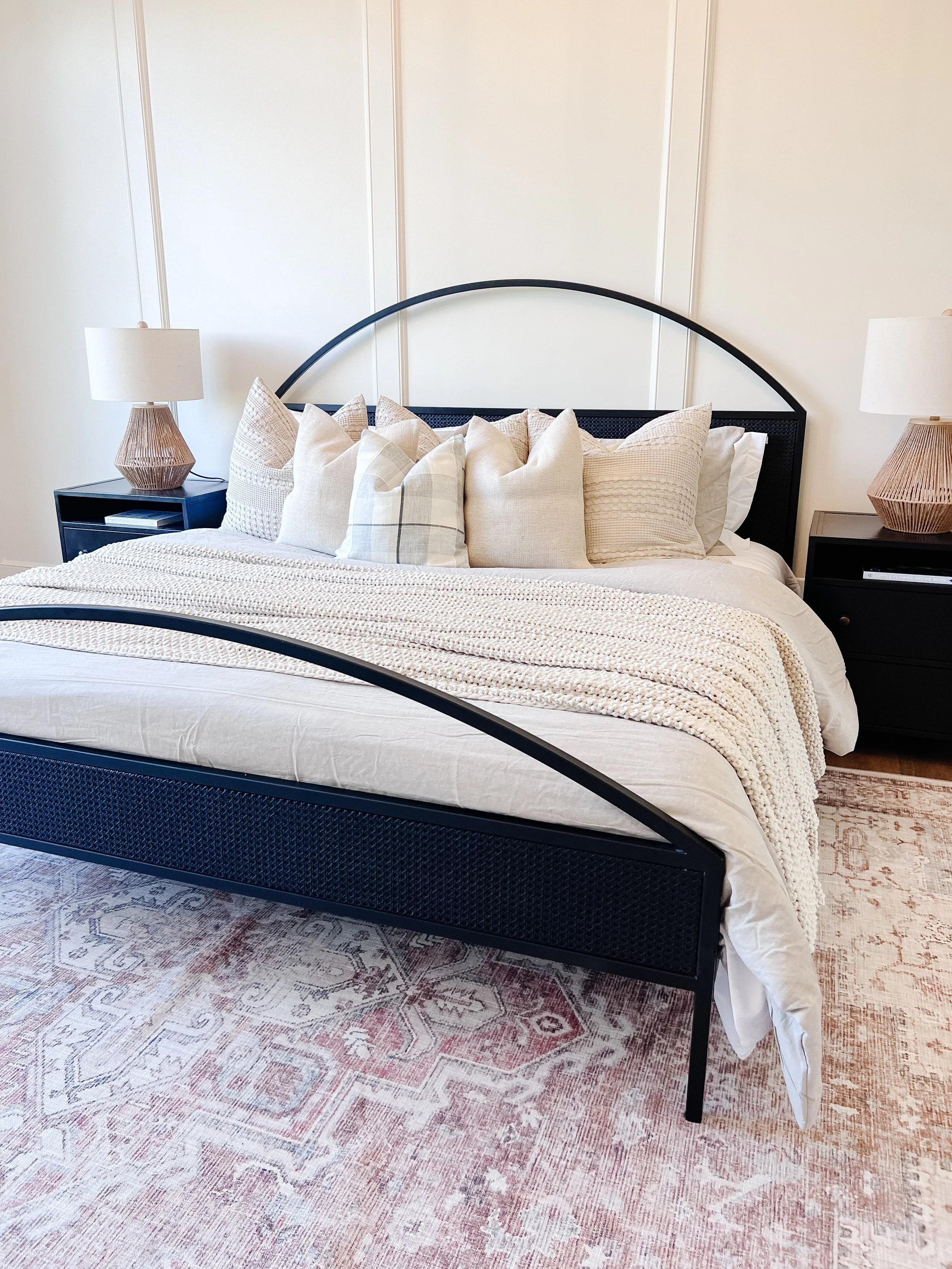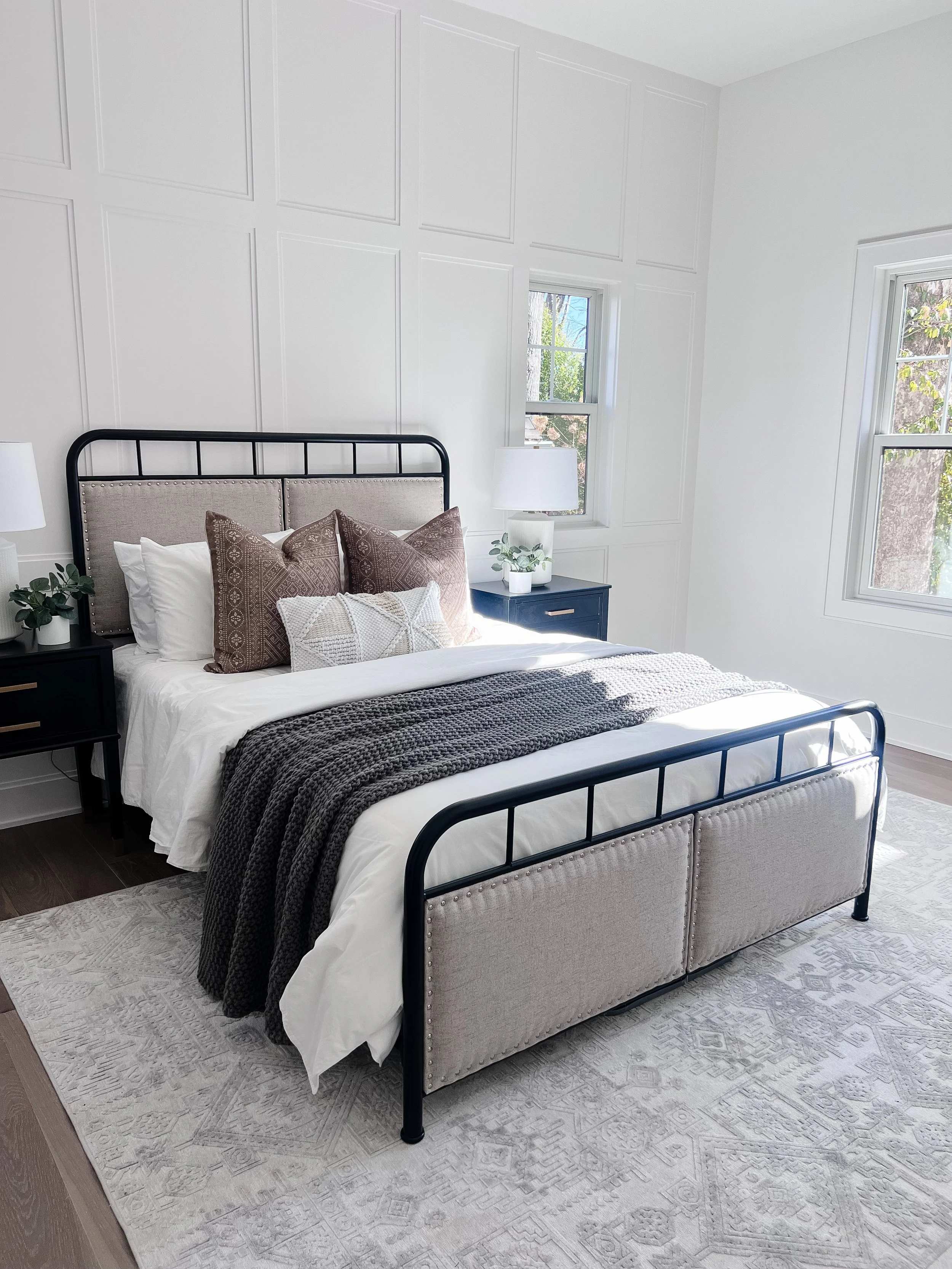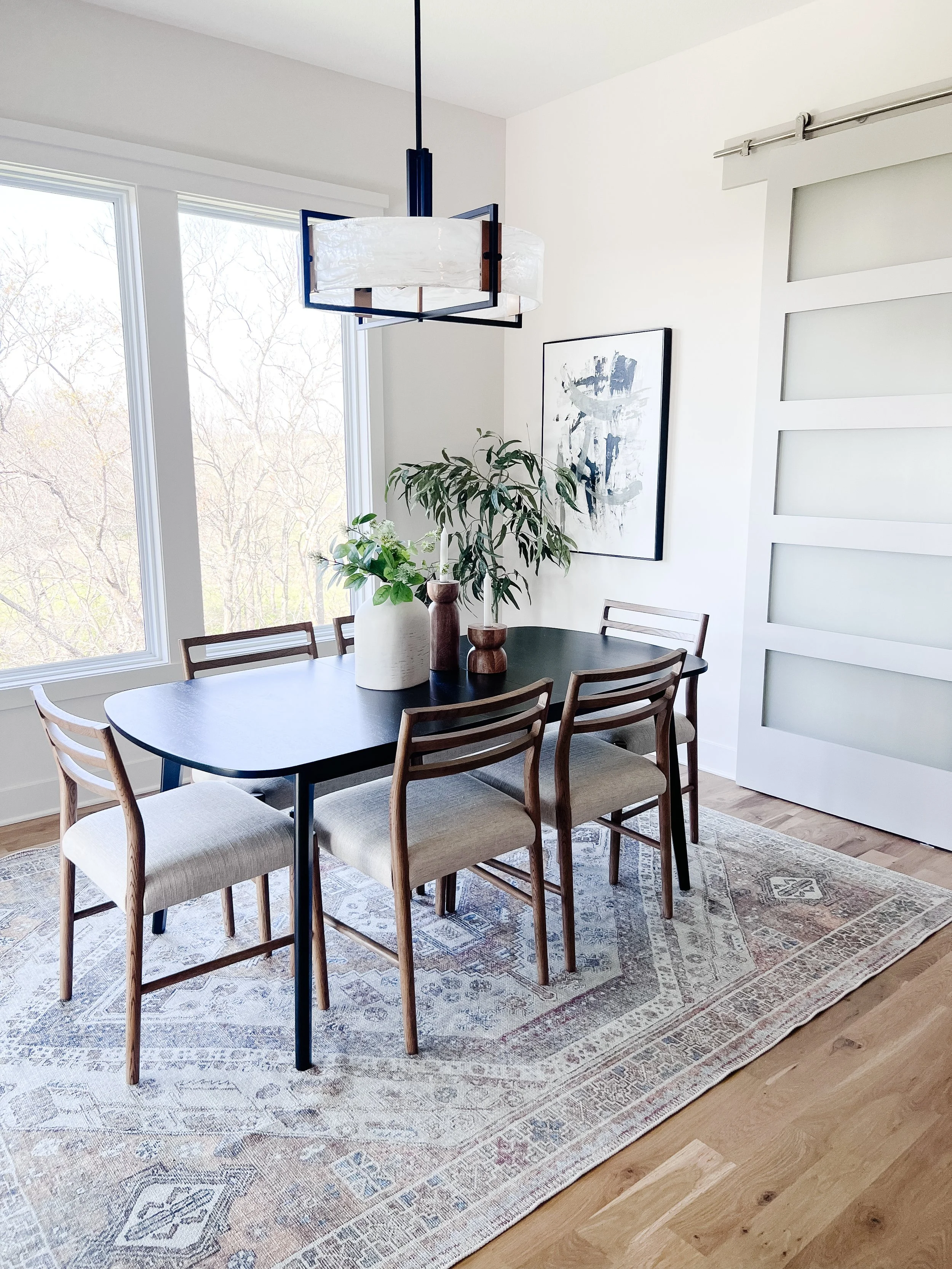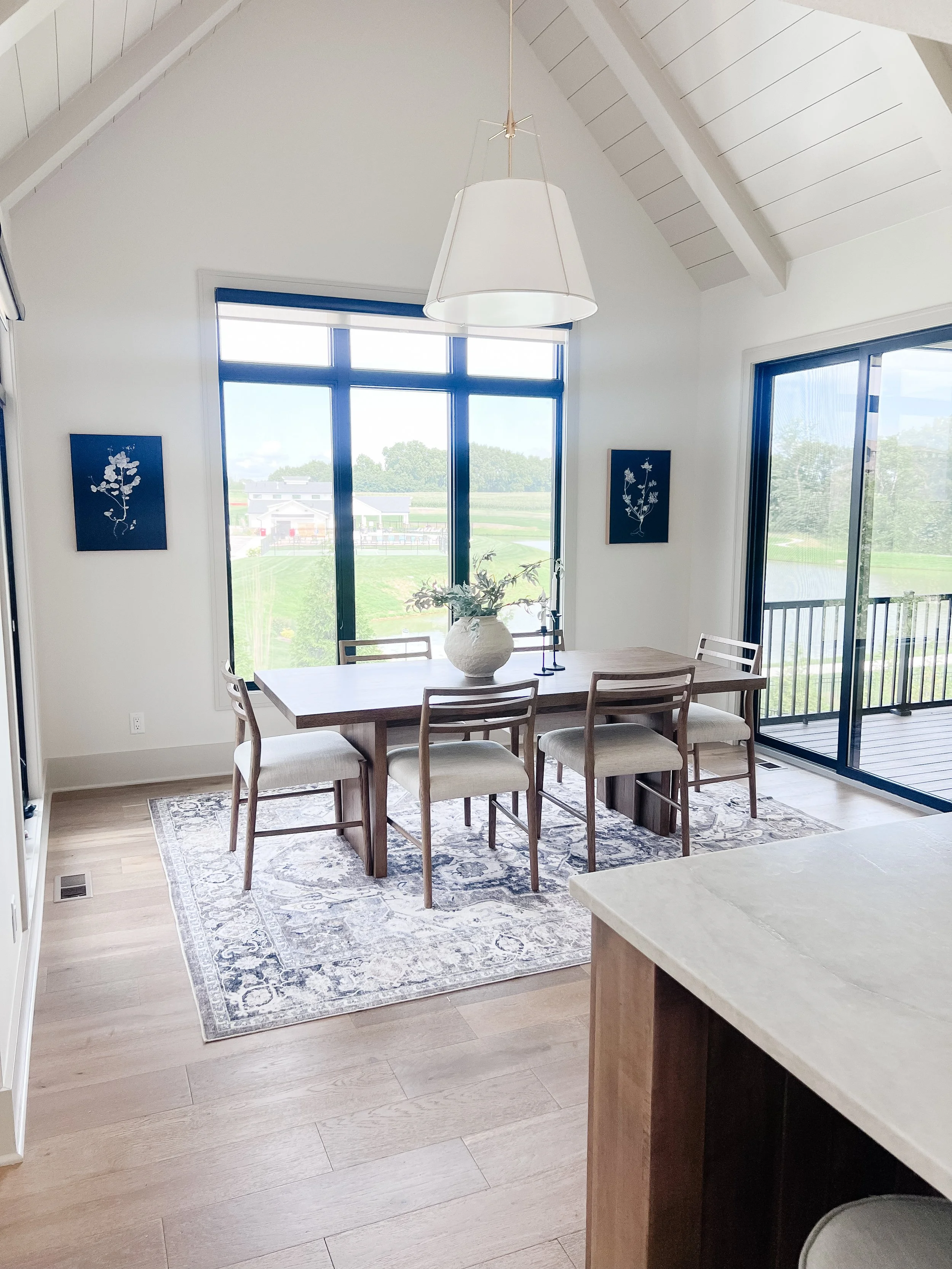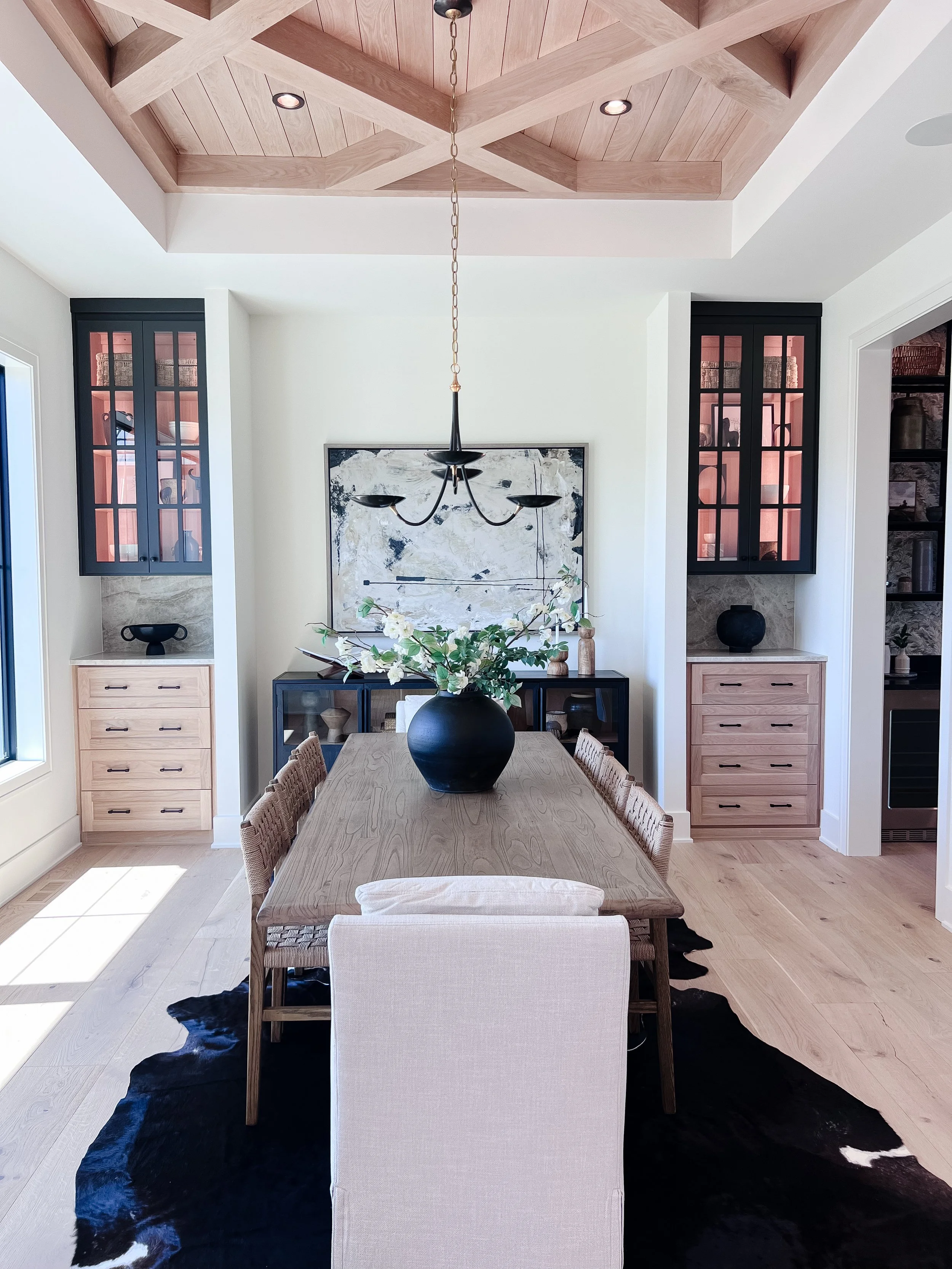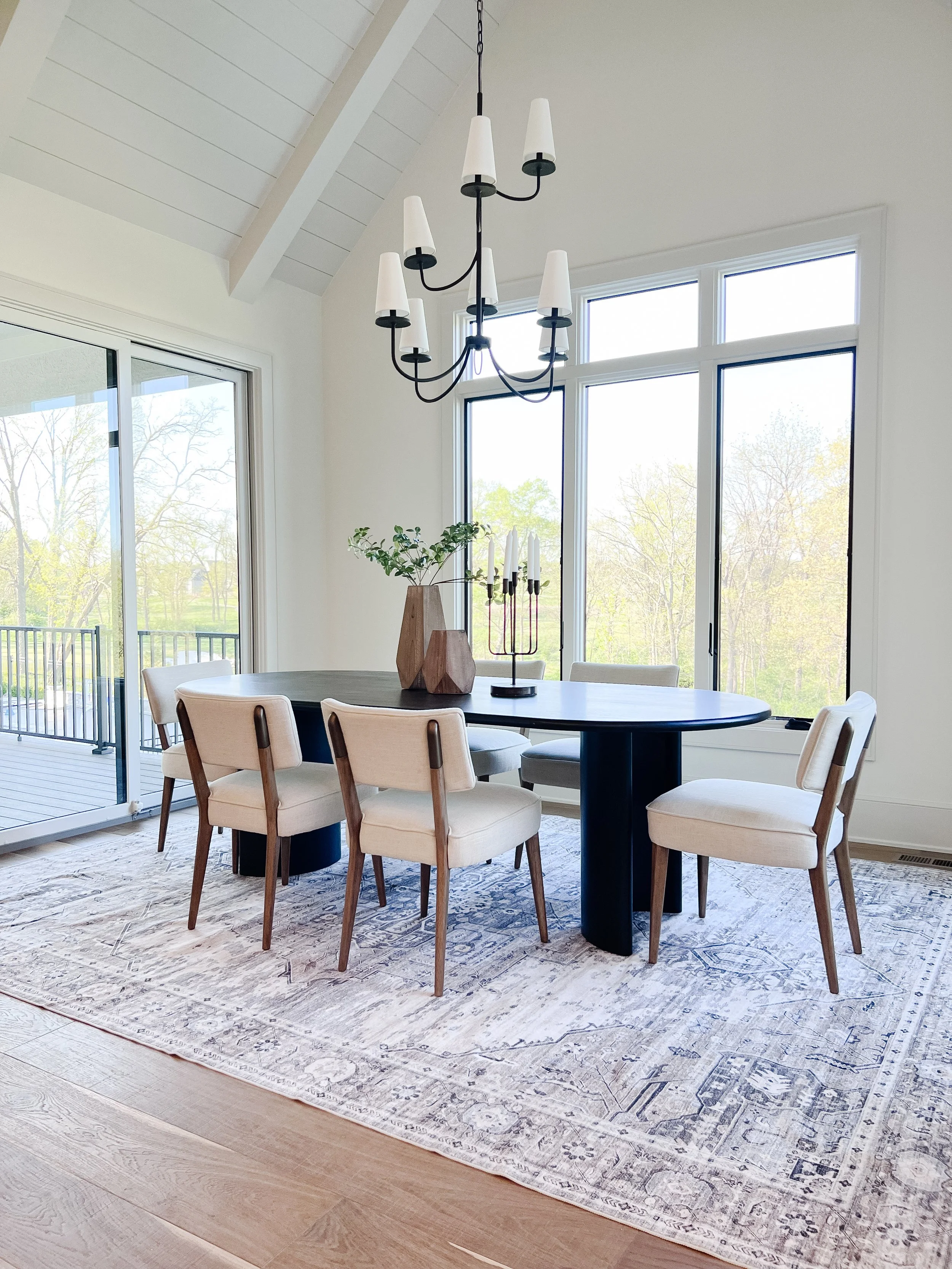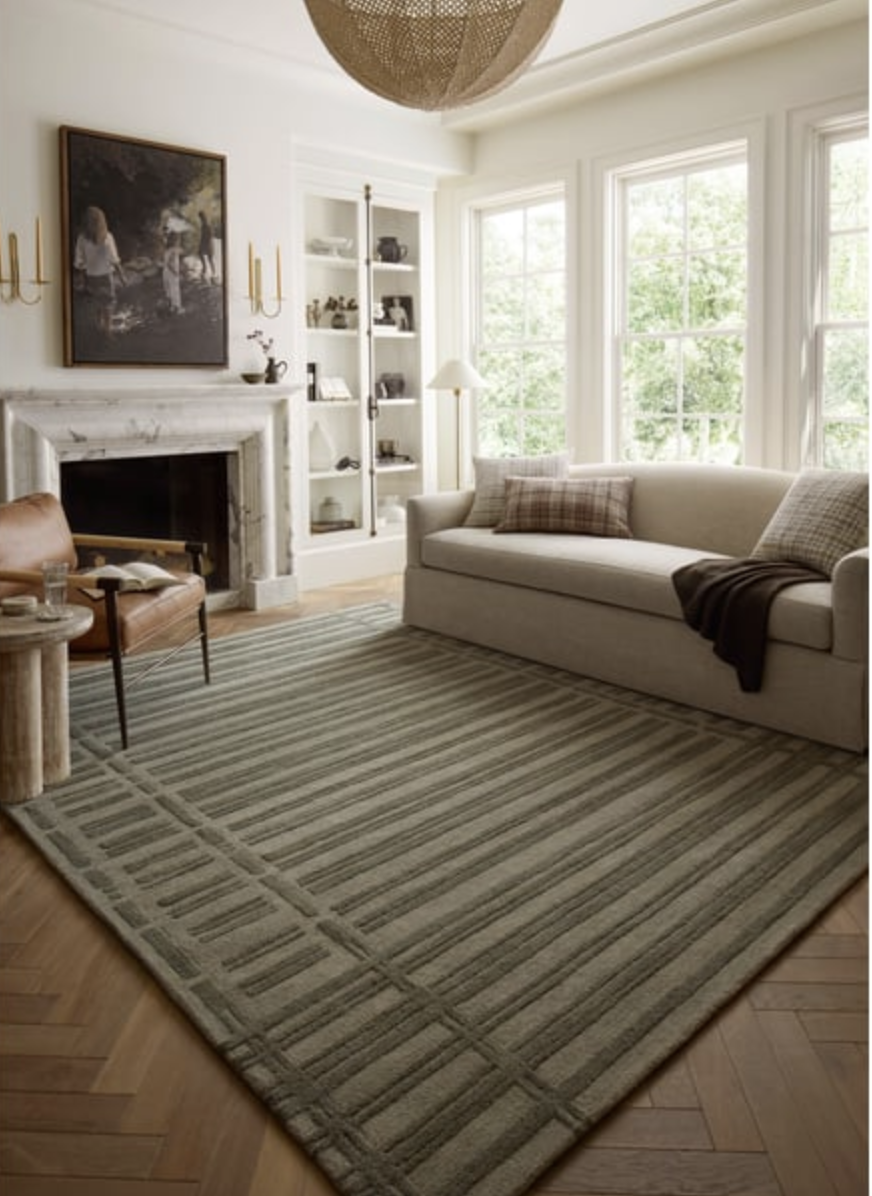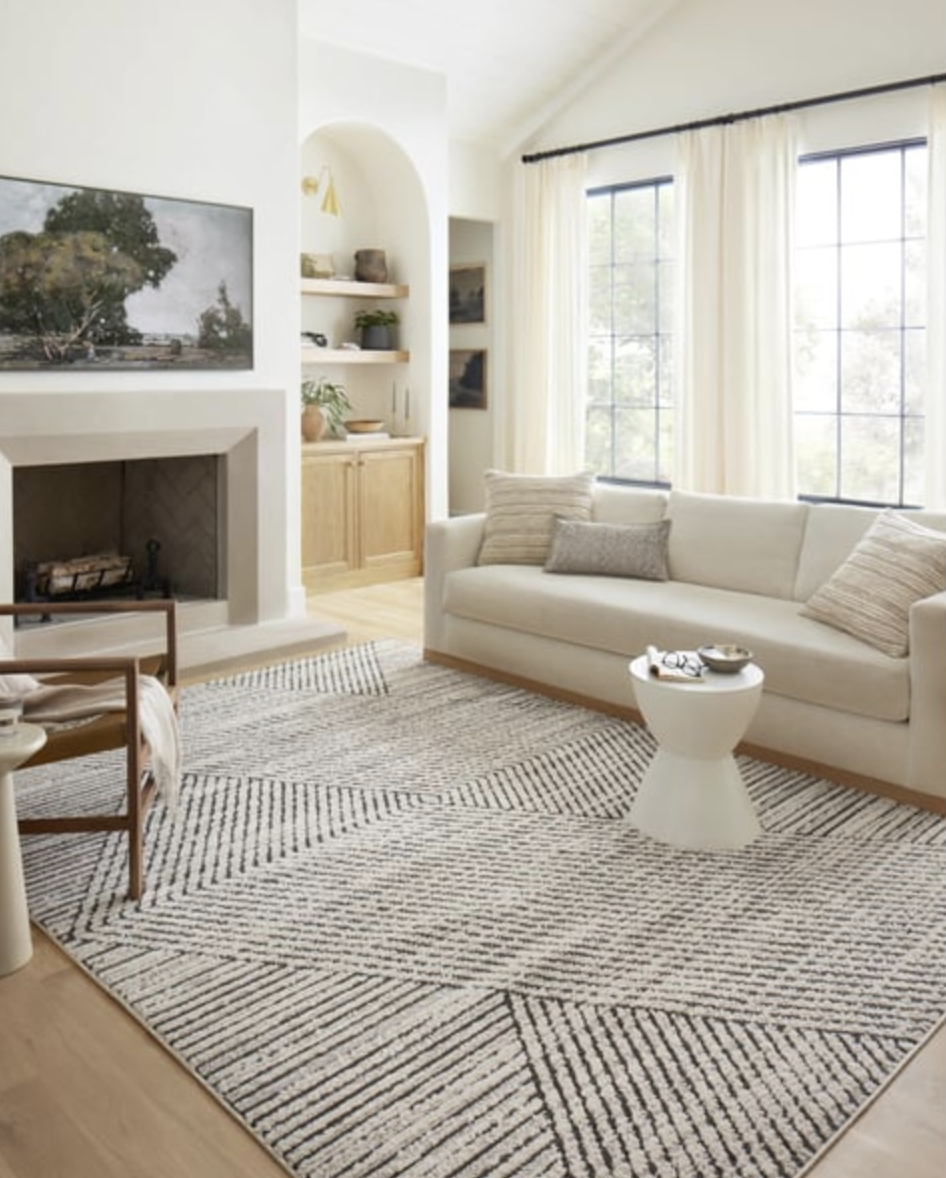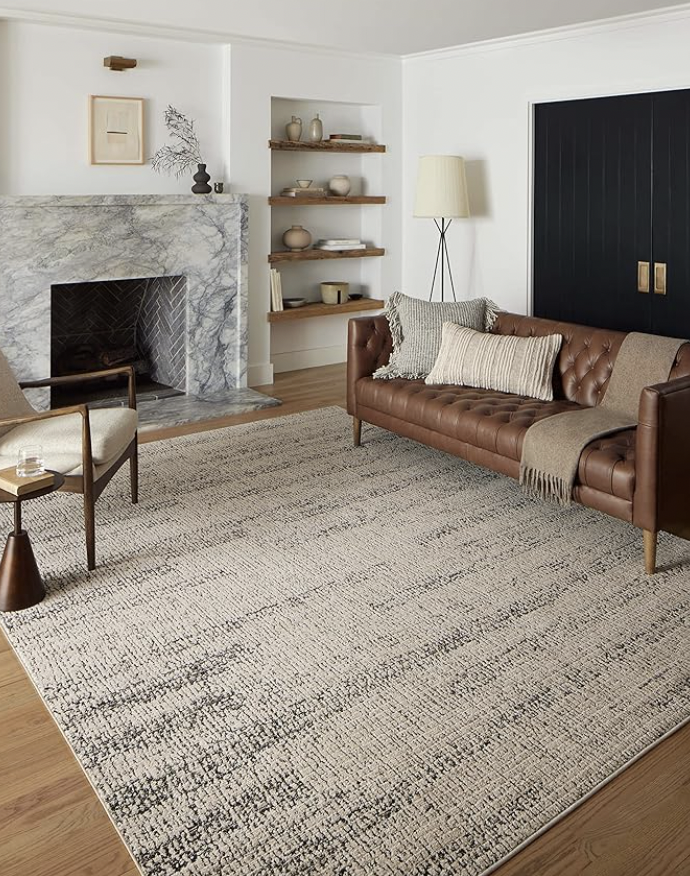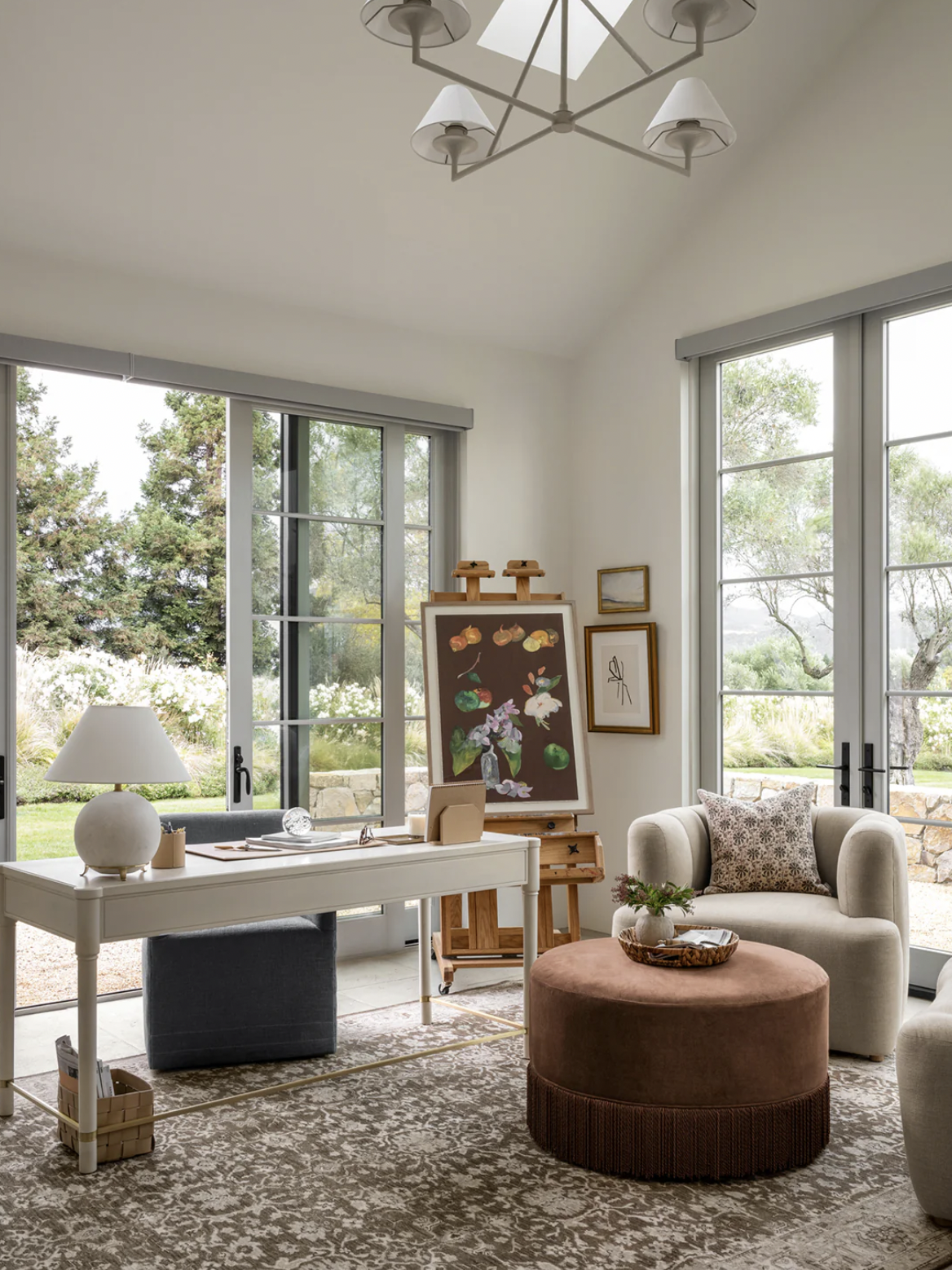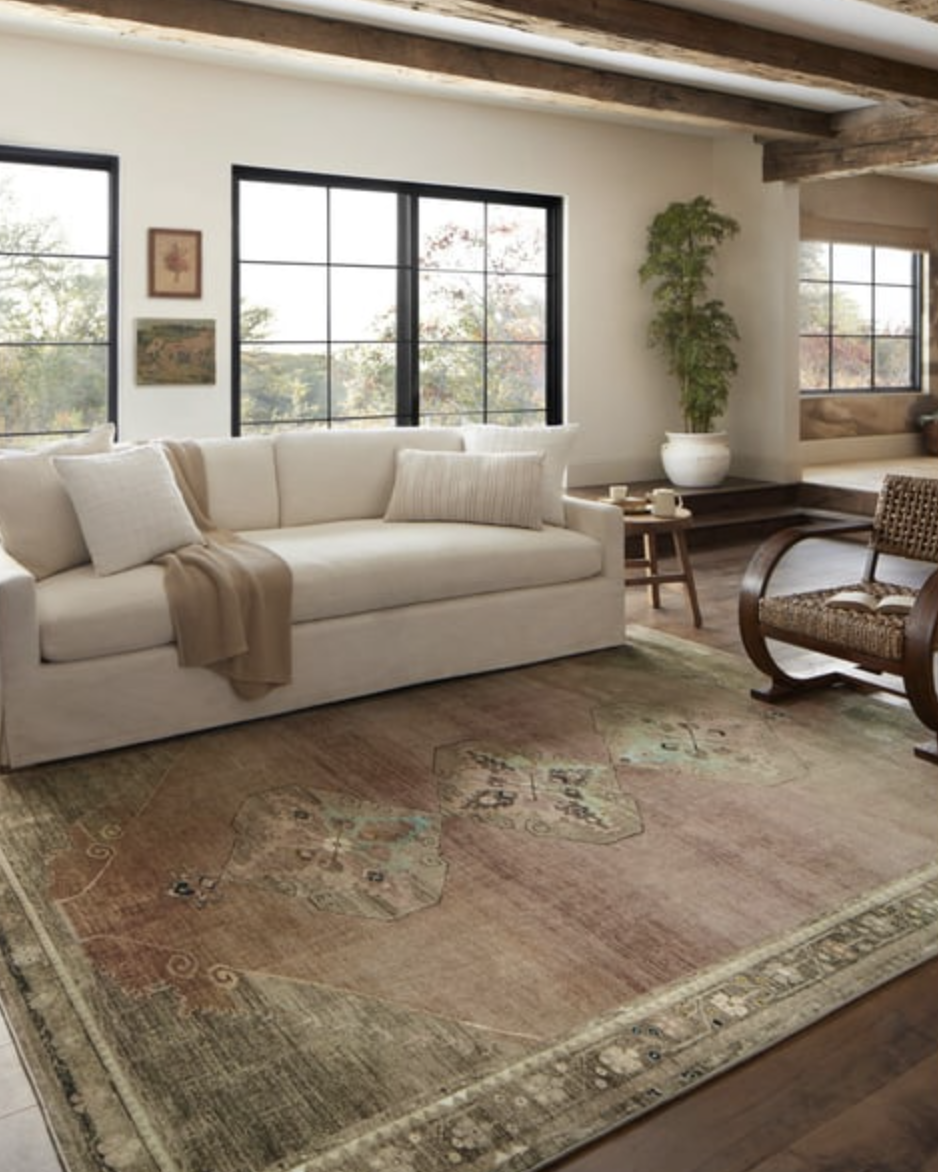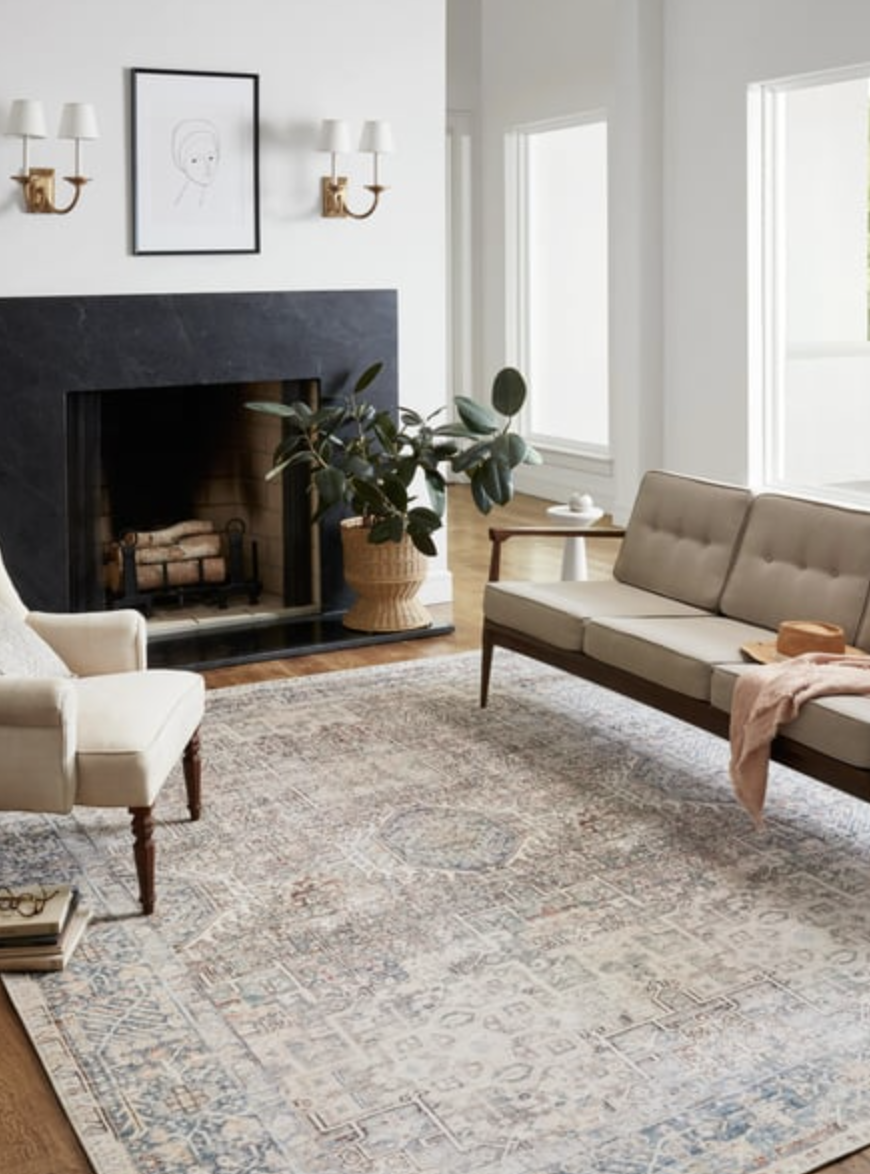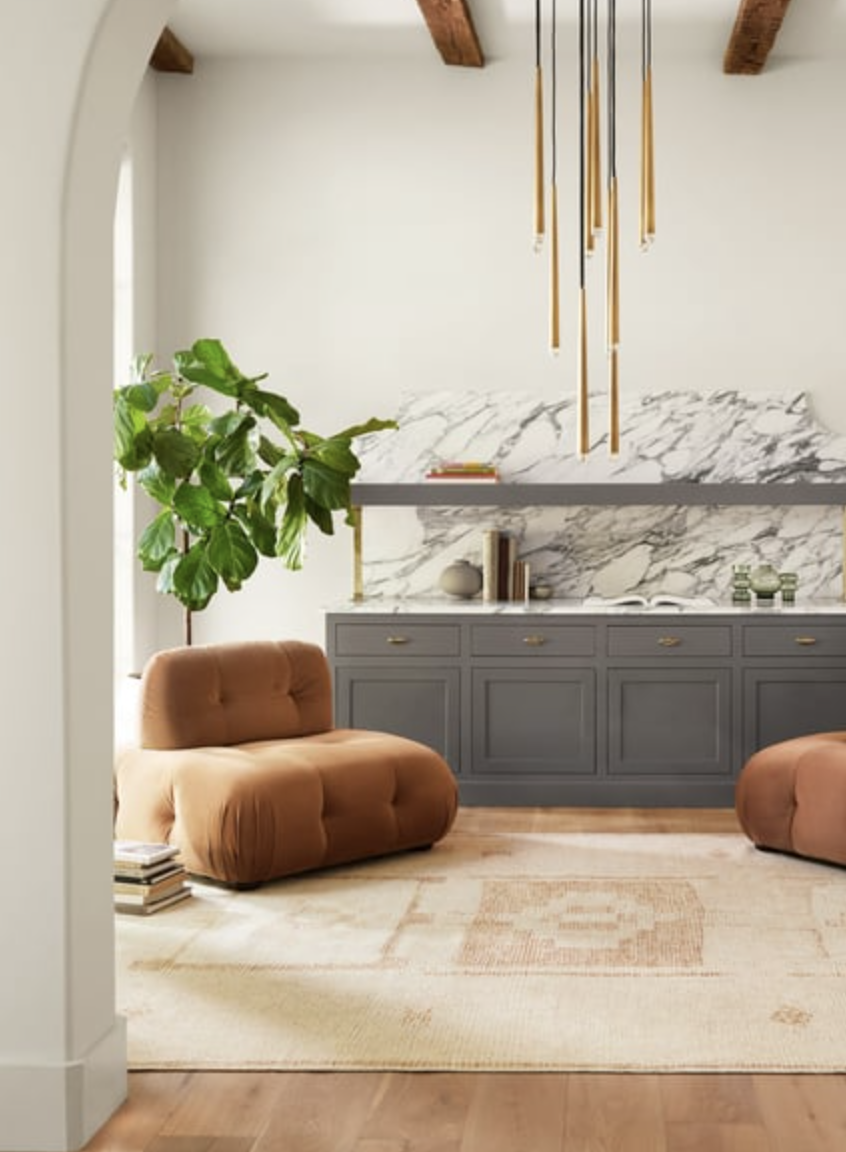The Ultimate Guide to Rugs: An Interior Designer’s Perspective
When it comes to interior design, rugs play a pivotal role in defining a space. Whether you’re looking to add warmth, texture, or a splash of color, the right rug can make all the difference. As an interior designer, I’ve seen firsthand how a thoughtfully chosen rug can elevate a room, making it feel complete and inviting. In this comprehensive guide, we’ll explore everything you need to know about rugs, from materials and sizing to placement and style preferences. By the end, you’ll be well-equipped to choose the perfect rug for any space in your home.
The Importance of Rugs in Interior Design
Rugs are more than just floor coverings; they’re essential elements of interior design that can serve both functional and aesthetic purposes. Here’s why rugs are so crucial:
Define Spaces: In open-plan homes, rugs can help delineate different areas, such as the living room, dining area, and reading nook. They also contribute to the overall warmth of a space, making it feel cozier and more inviting.
Enhance Acoustics: Rugs can help absorb sound, reducing noice levels in a room. This is particularly beneficial in rooms with high ceilings or hard surfaces that tend to create echoes.
Introduce Color and Texture: Rugs offer an easy way to introduce color, pattern, and texture into a room. Whether you’re looking for a bold statement piece or a subtle addition, there’s a rug to suit every style.
Understanding Rug Materials: Finding the Right Fit
The material of a rug is one of the most important factors to consider. It affects not only the look and feel of the rug but also its durability, maintenance, and price. Here’s a detailed breakdown of the most common rug materials and their pros and cons:
Wool: The Classic Choice
Pros:
Durability: Wool rugs are known for their durability. They can withstand heavy foot traffic, making them ideal for high-traffic areas like living rooms, hallways, and entryways.
Softness: Wool is naturally soft and plush, providing a luxurious feel underfoot.
Stain Resistance: Wool has natural stain-resistant properties due to the lanolin in the fibers, which repels liquids to some extent.
Insulation: Wool rugs provide excellent insulation, keeping your space warm in the winter and cool in the summer.
Cons:
Price: Wool rugs tend to be more expensive than other materials, but they’re an investment that can last for years.
Shedding: Wool rugs may shed initially, which can be a nuisance. However, this usually subsides over time with regular vacuuming.
Click to Shop Our Favorite Wool Rugs
-
Click to Shop Our Favorite Wool Rugs -
Cotton: Affordable and Versatile
Pros:
Affordability: Cotton rugs are typically more affordable than wool rugs, making them a great option for those on a budget.
Easy to Clean: Cotton rugs are usually machine-washable or can be easily spot-cleaned, making them a practical choice for families with kids or pets.
Versatility: Available in a wide range of colors and patterns, cotton rugs can fit into almost any design scheme. They’re also lightweight and easy to move.
Cons:
Durability: Cotton rugs are less durable than wool or synthetic rugs and may show signs of wear and tear more quickly, especially in high-traffic areas.
Less Plush: Cotton rugs are generally thinner and less plush than wool rugs, which might not provide the same level of comfort underfoot.
Click to Shop Our Favorite Cotton Rugs
-
Click to Shop Our Favorite Cotton Rugs -
Jute and Sisal: Natural and Textured
Pros:
Eco-Friendly: Jute and sisal rugs are made from natural fibers, making them an environmentally friendly choice.
Durability: These rugs are highly durable and can handle a lot of wear, making them suitable for high-traffic areas like hallways and living rooms.
Texture: The natural, earthy texture of jute and sisal rugs adds a rustic or coastal vibe to any space.
Cons:
Roughness: Jute and sisal rugs can be rough underfoot, which may not be comfortable for everyone, especially in areas where you can walk barefoot.
Stain Susceptibility: These materials are less resistant to stains adn moisture, making them less ideal for kitchens or bathrooms.
Maintenance: Jute and sisal rugs are harder to clean, often requiring professional cleaning services.
Click to Shop Our Favorite Jute Rugs
-
Click to Shop Our Favorite Jute Rugs -
Synthetic Fibers: Practical and Budget-Friendly
Pros:
Affordability: Rugs made from synthetic fibers like polyester, nylon, and polyproylene are generally more affordable than natural fiber rugs.
Stain Resistance: Synthetic rugs are often treated to resist stains, making them a great option for homes with children or pets.
Variety: Available in a wide range of styles, colors and patterns, synthetic rugs can fit almost any design preference.
Durability: Synthetic rugs are durable and can withstand heavy foot traffic, making them suitable for busy households.
Cons:
Feel: Synthetic rugs don’t have the same natural feel as wool or silk rugs. They may feel less plush and more artificial underfoot.
Environmental Impact: Synthetic fibers are made from petroleum-based products, which are less environmentally friendly natural fibers.
Click to Shop Our Favorite Synthetic Rugs
-
Click to Shop Our Favorite Synthetic Rugs -
Sizing: Getting the Proportions Right
Selecting the right size is crucial for achieving the perfect balance in a room. A rug that’s too small can make the space feel disjointed, while one that’s too large can overwhelm the room. Here’s how to get the sizing right for different rooms in your home:
Living Room
All Furniture on the Rug: This approach creates a unified, cohesive look by having all the furniture—sofas, chairs, coffee tables—completely on the rug. This works well in larger living rooms where you want to create a single, defined seating area. The rug should extend to at least 6-12 inches beyond the furniture on all sides.
Front Legs on the Rug: If you prefer a more casual look or have a smaller living room placing just the front legs of the furniture on the rug can be a great option. This method still ties the room together without requiring an oversized rug.
Layering Rugs: For a more eclectic look or textured look, consider layering a smaller rug on top of a larger one. This allows you to play with patterns and textures, creating a unique focal point in the room.
Bedroom
In the bedroom, the rug should anchor the bed, creating a cozy and inviting space. There are several ways to position a rug in a bedroom:
Under The Bed: A popular option is to place the rug under the bed, extending beyond the sides and the foot of the bed. This ensures that your feet land on a soft surface when you get out of bed.
Runner Rugs: If you have a smaller room or prefer a different look, consider placing runner rugs on either side of the bed. This can add warmth and texture without the need for a large area rug.
Dining Room
The rug in a dining room should be a large enough to accommodate both the table and the chairs, even when the chairs are pulled out. This usually means adding at least 24 inched to each side of the table’s dimensions. A well-sized rug ensures that the chairs remain on the rug, creating a seamless and elegant look.
Shape Consideration: If you have a round ding table, consider a round rug to complement the shape. For rectangular or square tables, a rectangular rug is the traditional choice.
Material Choice: Given that dining rooms are prone to spills, opt for a rug that’s easy to clean and resistant to stains. Synthetic fiber rugs are excellent choices for dining rooms.
Hallway and Entryways
Hallways and entryways benefit from runners, which are long, narrow rugs that add warmth and style to these often overlooked spaces. When choosing a runner, ensure that it leaves at least 4 to 6 inches of flooring visible on all sides. This creates a balanced look and prevents the runner from overwhelming the space.
Material Choice: Given the high traffic in these areas, opt for durable materials like wool, synthetic fibers, or natural fibers like jute or sisal. These materials can withstand the wear and tear of the frequent foot traffic.
Length and Width: The length of the runner should fit the length of the hallway, while the width should be narrow enough to leave some flooring exposed.
Style Preferences: Finding Your Aesthetic
The style of your rug can dramatically influence the overall look and feel of a room. Here’s how to navigate different style preferences and find the perfect rug to complement your space:
Modern and Minimalist
For modern and minimalist interiors, less is more. Look for rugs with clean lines, neutral colors, and simple patters. Solid-colored rugs or those with subtle geometric designs can add a touch of sophistication without overwhelming the space.
Monochromatic Schemes: A monochromatic rug, where different shades of the same color are used, can create a cohesive and calming environment. This works particularly well in minimalist spaces where the goal is to create a serene atmosphere.
Texture Play: In minimalist settings, texture becomes crucial. Opt for a rug with a distinct texture, such as high-low pile, to add depth and interest without introducing bold patterns.
Click to Shop
-
Click to Shop -
Traditional and Classic
Traditional and classic interiors often call for rugs with rich colors, intricate patterns, and a timeless appeal. Oriental rugs, with their detailed designs and deep hues, are a popular choice in these spaces.
Oriental Rugs: These rugs are known for their elaborate patterns and rich colors. They can serve as the centerpiece of a room, drawing attention and adding a sense of luxury.
Floral Patterns: Rugs with floral or paisley patterns are also common in traditional settings. These patterns can complement classic furniture and ornate decor.
Antique or Vintage: For an authentic traditional look, consider investing in an antique or vintage rug. These rugs often come with a history and a story, adding character and depth to your space.
Click to Shop
-
Click to Shop -
Bohemian and Eclectic
Bohemian and Eclectic interiors thrive on color, pattern, and a mix of different textures. In these spaces, the rug is often a focal point, bringing together various elements of the room.
Bold Colors and Patterns: Don’t be afraid to choose a rug with vibrant colors and bold patterns. In a bohemian setting, the rug can be a statement piece that ties together the eclectic mix of furniture and decor.
Layering Rugs: Layering different rugs is a hallmark of bohemian style. Mix and match rugs of various sizes, patters, and textures to create a cozy, lived-in look. For example, a large neutral jute rug can be layered with a smaller colorful rug.
Global Influence: Bohemian style can often incorporate rugs with global influences, such as Moroccan, Turkish, or Persian rugs. These rugs bring a sense of adventure and worldliness to the space.
Click to shop
-
Click to shop -
Coastal and Beachy
Coastal interiors are all about light, airy spaces with a relaxed, beachy vibe. The right rug can enhance this atmosphere by adding texture and subtle color.
Natural Fibers: Rugs made from natural fibers like jute, sisal, or seagrass are perfect for coastal interiors. Their earthy textures complement the light and breezy feel of coastal decor.
Neutral Tones: Stick to neutral tones like sand, ivory, and soft blues to keep the space feeling calm and serene. A simple striped pattern can add a nautical touch without being too bold.
Faded or Washed-Out Look: Rugs with slightly faded or distressed look can enhance the relaxed, lived-in feel of a coastal home. This style pairs well with the weathered wood furniture and soft, linen fabrics.
Click to Shop
-
Click to Shop -
Rugs on Carpet: To Layer or Not to Layer?
Layering rugs on carpet is a trend that’s been gaining popularity, but it’s not without its challengers. Here’s how to do it right:
Pros of Layering Rugs on Carpet
Adds Texture and Depth: Layering a rug on top of carpet can add texture and depth to a room, creating a more dynamic and visually interesting space.
Defines a Space: In open-plan homes, layering rugs on carpet can help define different areas, such as a seating area of dining space.
Protects Carpet: A rug can protect high-traffic areas of carpet from wear and tear, extending the life of your carpet.
Cons of Layering Rugs on Carpet
Potential Slipping: Rugs placed on carpet can slip or bunch up, creating a tripping hazard. To prevent this, use a rug pad designed for use on carpet.
Not all Rugs Work Well: Not all rugs work well on carpet. Thinner, flat-weave rugs are generally the best choice, as thicker rugs can create an uneven surface.
Aesthetic Challenges: Layering rugs on carpet can sometimes create a cluttered look, especially if the patterns or colors clash. To avoid this, choose rugs that complement the existing carpet.
Our Favorite Places to Buy Rugs
As an interior designer, I understand that finding the perfect rug can be both exciting and overwhelming. With so many options available, it’s important to know where to look for high quality rugs that fir both your style and budget. Here are some of my go-to sources for rugs, whether you’re looking for something affordable or a statement piece from a trusted brand.
1. Wayfair: Affordable and Diverse Selection
Wayfair is one of my favorite places to shop for rugs because of its vast selection and budget-friendly prices. Whether you’re looking for a traditional Oriental rug or a modern geometric design, Wayfair has something for every style and room. Their filtering options make it easy to narrow down your choices based on size, material, and color, which is incredibly helpful when you’re looking for something specific.
Why We Love It:
Budget-Friendly: Wayfair offers a wide range of rugs at various price points, making it accessible for those on a budget.
Variety: The extensive selection means you’re likely to find exactly what you’re looking for, whether it’s a small accent rug or a large area rug.
Convenience: With fast shipping and easy returns, Wayfair makes the online shopping experience seamless.
2. Boutique Rugs: Unique Finds at Affordable Prices
For those who want something a little more unique but still affordable, Boutique Rugs is a fantastic option. They specialize in trendy, stylish rugs that can elevate any space. What sets Boutique Rugs apart is their curated collection that often includes pieces you won’t find anywhere else. Plus, they frequently offer discounts and promotions, making it easier to find high-quality rugs at great prices.
Why We Love It:
Exclusive Designs: Boutique Rugs offers a range of exclusive designs that can help you add a unique touch to your home.
Affordable: Despite the boutique feel, the prices are very reasonable, especially during sales.
Quality: The rugs are well-made and often feature interesting patterns and textures that add depth and character to a room.
3. Loloi: High-Quality, Stylish Rugs
When it comes to combining style, quality, and brand reputation, Loloi is my top pick. Loloi rugs are known for their exquisite craftsmanship, innovative designs, and durability. Whether you’re looking for a luxurious wool rug or a trendy vintage-inspired piece, Loloi has an extensive collection that caters to various styles and preferences. The brand’s collaborations with renowned designers also bring fresh, creative perspectives to their rug designs.
Why We Love It:
Design Excellence: Loloi’s attention to detail and commitment to quality are evident in every rug they produce. Their designs are both timeless and on-trend, making them a favorite among interior designers.
Durability: Loloi rugs are made to last, with high-quality materials and construction that ensure they stand up to daily wear and tear.
Versatility: With a wide range of styles—from bohemian to modern to traditional—Loloi has something for every home.
Finding the perfect rug involves more than just picking a design you like; it’s about choosing a piece that fits your lifestyle, budget, and aesthetic. Whether you’re browsing Wayfair for a budget-friendly option, exploring unique finds at Boutique Rugs, or investing in a high-quality Loloi rug, these sources offer a variety of choices that cater to different needs.
Remember, a rug is an investment in your home’s comfort and style, so take your time to explore these options and choose one that you’ll love for years to come. Happy rug shopping! Contact us today for help selecting rugs!





